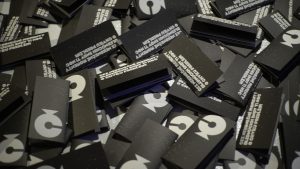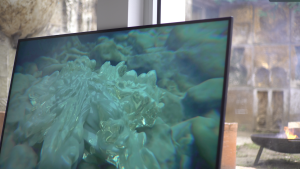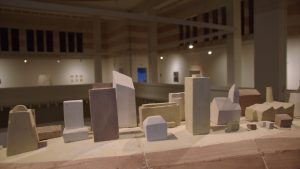Embed
Embed
Medzinárodná výstava súčasného vizuálneho umenia Podoby slobody vznikla v spolupráci Nitrianskej galérie s Asociáciou Divadelná Nitra pri príležitosti 30. výročia nežnej revolúcie, ktorej hlavným prínosom pre našu spoločnosť je sloboda.
Ako môžeme slobodu definovať a pochopiť? Ako ju vnímajú ľudia rôznych národností a spoločenských skupín? Čo pre nás znamená? Treba o ňu bojovať? Akými spôsobmi? Ako sa spoločnosť stavia proti jej zneužívaniu? Aké hranice má sloboda prejavu v čase plnom konšpirácií, hoaxov a fake news? Sloboda sa dnes často podobá skôr na boj o prežitie v džungli než na idealistické predstavy o spolunažívaní v mieri a hojnosti, preto niektorí ľudia s nostalgiou spomínajú na totalitnú zlatú klietku. Aké nebezpečenstvá nám hrozia, ak začneme zabúdať na minulosť a relativizovať neslobodné režimy?
Na základe otvorenej výzvy, do ktorej sa prihlásilo až 180 projektov z celého sveta, sme vybrali diela 25 umelcov a umeleckých skupín z 15 krajín, prevažne z bývalého východného bloku. Krajín, ktoré boli od konca druhej svetovej vojny až do pádu železnej opony v područí Sovietskeho zväzu. Ich obyvatelia si prešli podobnými skúsenosťami: dlhoročným nedemokratickým režimom, euforickým príchodom slobody v revolučnom roku 1989 a následným transformačným obdobím deväťdesiatych rokov, keď si niektorí mysleli, že sloboda stojí nad všetkými zákonmi…
The international exhibition of contemporary visual art titled Faces of Freedom is organised by the Nitra Gallery in cooperation with the Divadelná Nitra Association on the occasion of the 30th anniversary of the fall of the Iron Curtain (in former Czechoslovakia known as the Velvet Revolution), whose primary contribution to our society is freedom.
How can we define and understand freedom? How do people of different nationalities and social groups perceive it? What does it mean to us? Do we need to fight for it? And how, by which means? What do we do when it is exploited? Where does the freedom of speech end in a world full of conspiracies, hoaxes and fake news? Today, freedom sometimes seems to resemble a jungle fight for survival rather than idealistic notions of peaceful and prosperous cohabitation, which can lead to nostalgic memories of the totalitarian golden cage in many of the post-socialist countries. What are the dangers of forgetting our past and the resulting relativism of undemocratic regimes?
The artists have been selected from an open call which received 180 submissions from all over the world. The exhibition presents 25 artists and artist groups from 15 countries, mostly of the former Eastern Bloc. Countries that have been under the control of the Soviet Union since the end of World War II until the fall of the Iron Curtain. These countries and its people share similar experiences: the long-ruling authoritarian regime, the euphoric arrival of freedom in 1989 and the subsequent transformation period of the 1990s when many considered freedom superior to any and all laws…















